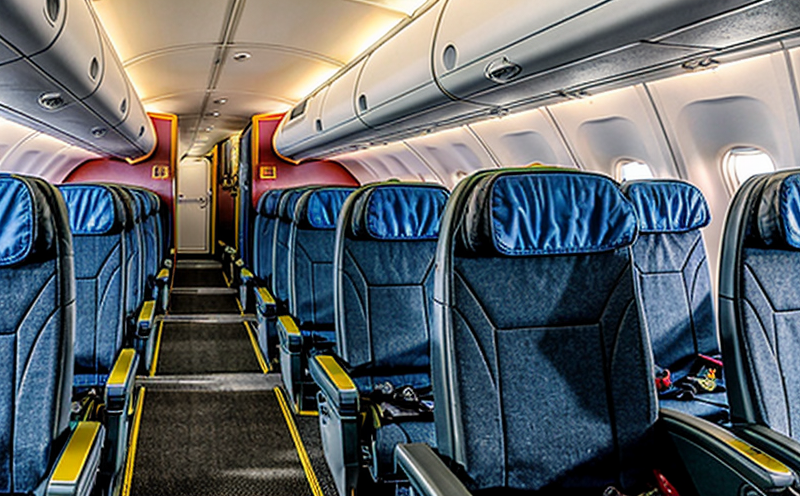Evaluating the smoke production and toxicity of flammable materials in aircraft cabins
Evaluating the Smoke Production and Toxicity of Flammable Materials in Aircraft Cabins A Critical Laboratory Service for Businesses
The aviation industry is one of the most heavily regulated sectors globally, with a strong emphasis on safety and risk management. As such, manufacturers and suppliers of materials used in aircraft cabins are under immense pressure to ensure that their products meet stringent standards. One critical aspect of this regulation is the evaluation of smoke production and toxicity of flammable materials in aircraft cabins.
This article will delve into the importance of evaluating smoke production and toxicity of flammable materials in aircraft cabins, highlighting the key benefits and advantages of using laboratory services provided by Eurolab to ensure compliance with regulatory requirements. By understanding the significance of this process and leveraging the expertise of a trusted laboratory service provider, businesses can mitigate risks, optimize their products, and maintain a competitive edge.
What is Evaluating Smoke Production and Toxicity in Aircraft Cabins?
Evaluating smoke production and toxicity of flammable materials in aircraft cabins involves testing the materials used in cabin interiors for their ability to produce smoke and toxic fumes during fires. This process simulates real-world scenarios, including crashes and emergencies, to assess the potential risks associated with a materials combustion properties.
During these tests, materials are subjected to controlled fire conditions, and their performance is evaluated based on key criteria, such as
Smoke opacity (the density of smoke produced)
Carbon monoxide (CO) emissions
Particulate matter (PM) emissions
Toxic gas release
The results provide critical insights into the materials combustion behavior, enabling manufacturers and suppliers to refine their products, enhance safety features, and optimize performance.
Why is Evaluating Smoke Production and Toxicity of Flammable Materials in Aircraft Cabins Essential?
Compliance with Regulatory Requirements The International Civil Aviation Organization (ICAO) and the Federal Aviation Administration (FAA) set strict standards for materials used in aircraft cabins. Failure to comply can result in fines, penalties, or even product recalls.
Enhanced Safety Features By evaluating smoke production and toxicity, manufacturers can identify areas for improvement, leading to the development of safer products with reduced risk of fire-related incidents.
Competitive Advantage Companies that invest in laboratory testing services like Eurolab demonstrate their commitment to quality and safety, setting them apart from competitors who may not prioritize regulatory compliance.
Reduced Risk of Fire-Related Incidents By understanding the combustion behavior of materials, manufacturers can design products with reduced risk of fire-related incidents, minimizing potential harm to passengers and crew.
Key Benefits of Using Eurolabs Laboratory Services
Our laboratory services offer a range of benefits that cater to the needs of businesses in the aviation industry
Comprehensive Testing Capabilities Our state-of-the-art facilities enable us to perform an array of tests, including smoke opacity, CO emissions, PM emissions, and toxic gas release assessments.
Expertise and Experience Our team consists of seasoned professionals with extensive knowledge of regulatory requirements, ensuring that our services meet the highest standards.
Cost-Effective Solutions By leveraging our expertise and resources, businesses can minimize costs associated with product development, testing, and certification.
Timely Results and Reporting We provide prompt turnaround times for test results, enabling manufacturers to quickly address any issues and make informed decisions about their products.
Frequently Asked Questions (FAQs)
Q What types of materials are subject to smoke production and toxicity evaluation?
A Materials used in aircraft cabin interiors, including seating, upholstery, insulation, wiring, and electrical components.
Q How do I know if my material requires smoke production and toxicity testing?
A Check the relevant regulatory standards (e.g., ICAO and FAA guidelines) or consult with our experts to determine whether your material meets the necessary requirements.
Q What is the typical turnaround time for test results?
A Our laboratory services offer fast turnaround times, typically ranging from a few days to several weeks, depending on the complexity of the tests.
Q Can I perform smoke production and toxicity testing in-house or do I need to outsource to Eurolab?
A While some companies may have in-house capabilities, our experts recommend outsourcing to ensure accuracy, precision, and compliance with regulatory requirements.
Conclusion
Evaluating smoke production and toxicity of flammable materials in aircraft cabins is a critical laboratory service that plays a pivotal role in ensuring the safety of passengers and crew. By leveraging the expertise of a trusted laboratory service provider like Eurolab, businesses can mitigate risks, optimize their products, and maintain regulatory compliance.
In todays competitive aviation industry, companies that prioritize quality, safety, and regulatory compliance are more likely to succeed. Dont compromise on safety; choose Eurolab for your smoke production and toxicity testing needs and take the first step towards a safer, more compliant future for your business.




